
Gallery: Most Famous Waterfalls in the US
Waterfalls across the Nation
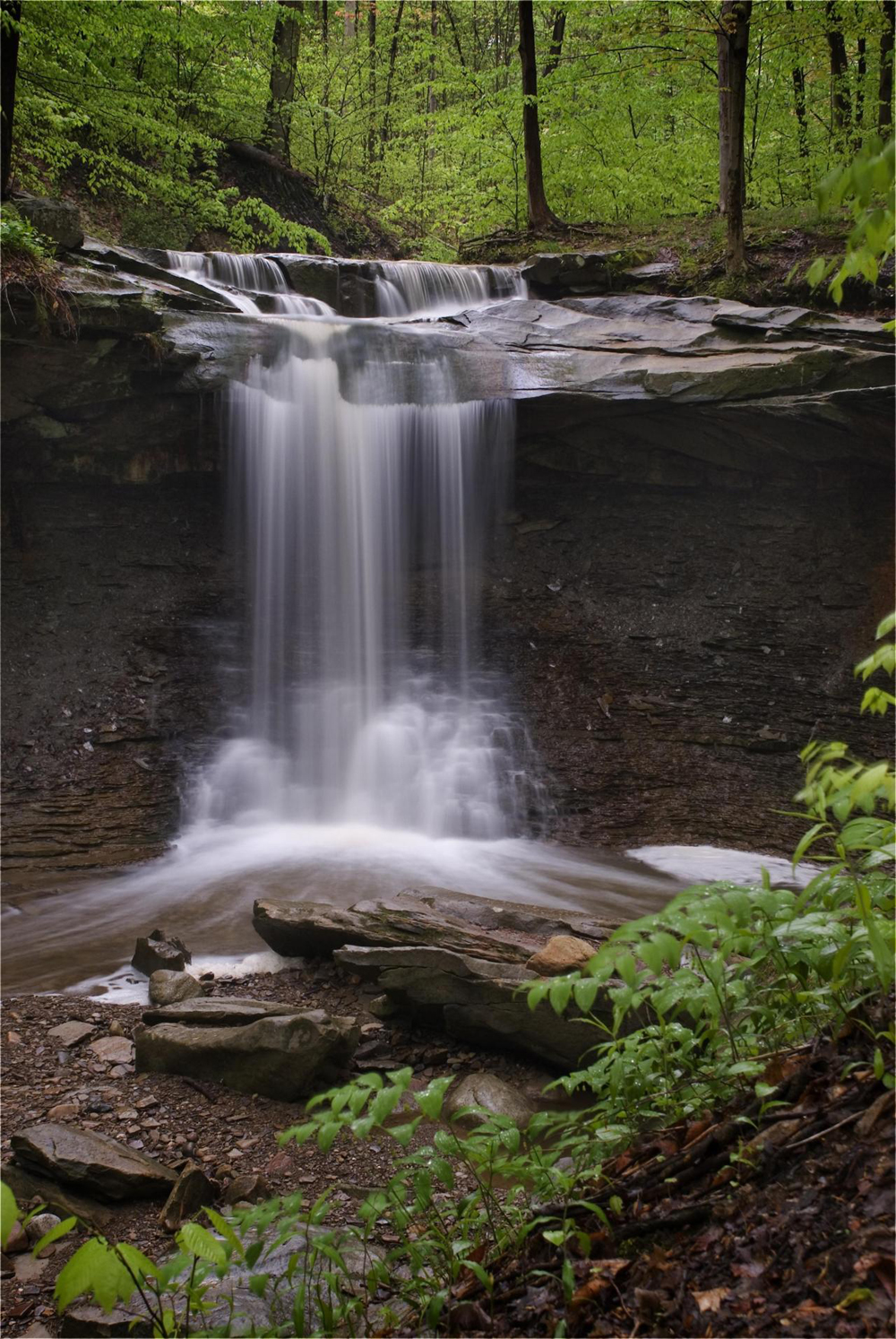
Waterfalls have an irresistible draw on the American public. Whether people want to photograph them or ride over them in barrels, the rushing water has an indomitable, captivating power.
The United States is rich with famous waterfalls. From world-renowned names to little-known cult favorites, and from roaring falls to scenic trickles, there are waterfalls in every state in the Union. Here are the most famous falls that America has to offer.
Yosemite Falls, California
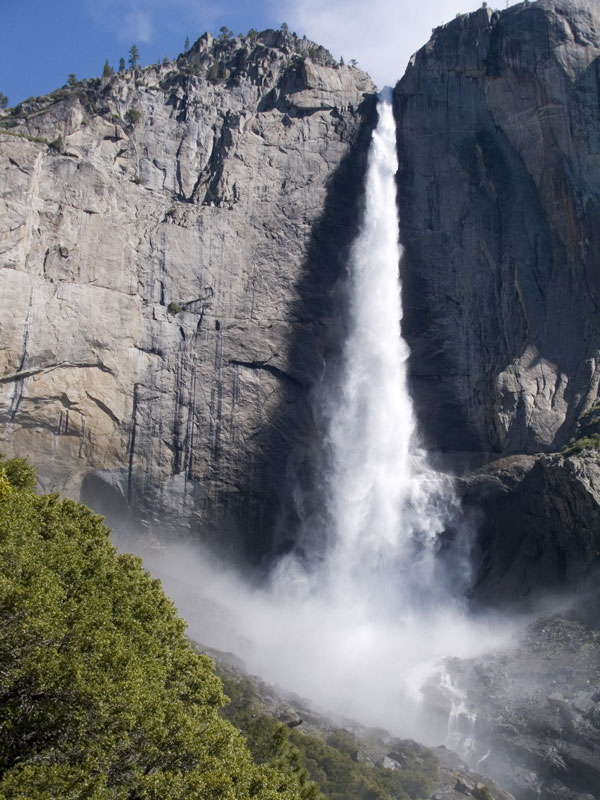
As the highest measured waterfall in North America, Yosemite Falls has plenty of wow-factor. Located in Yosemite National Park in the Sierra Nevada Mountains of California, Yosemite Falls is a major attraction in the park, especially in late spring when the water flow peaks.
The total 2,425 feet (739 meters) from the top of the upper falls to the base of the lower falls makes Yosemite Falls one of the tallest waterfalls in the world. Water falls in the three sections; the 1,430-foot (440 m) upper falls, then the 675-foot (206 m) middle cascades and lastly, the 320-foot (98 m) lower falls.
When conditions are just right, visitors can see a rare sight called a moonbow — basically, a lunar rainbow that appears as the moon sets. Moonbows only happens a few times each year as light is reflected off the surface of the moon rather than from direct sunlight.
Horsetail Fall, California
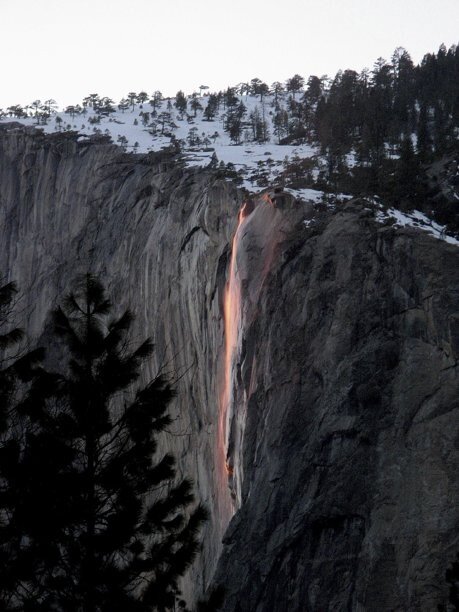
Yosemite Falls is the main draw to Yosemite National Park, but those in the know flock to Horestail Fall for a magical show in late winter. Known as Yosemite's "firefall," Horsetail Fall flows like lava under a clear sky and favorable lighting.
It's a small waterfall that makes big news whenever it glows orange during sunset in mid- to late February. At this time of year, the sun sets at just the right angle and the western sky is just clear enough to create the "firefall" effect. When that happens, the waterfall will glow orange for about 10 minutes.
Horsetail Fall flows over the eastern edge of El Capitan in Yosemite Valley. The waterfall is seasonal, only flowing in the winter and early spring as the snowpack melts. The waterfall's stream splits into two, both dropping about 1,500 feet (450 m).
The most popular place to see the "firefall" is the El Capitan picnic area, west of Yosemite Lodge and east of El Capitan, according to the park.
Ruby Falls, Tennessee
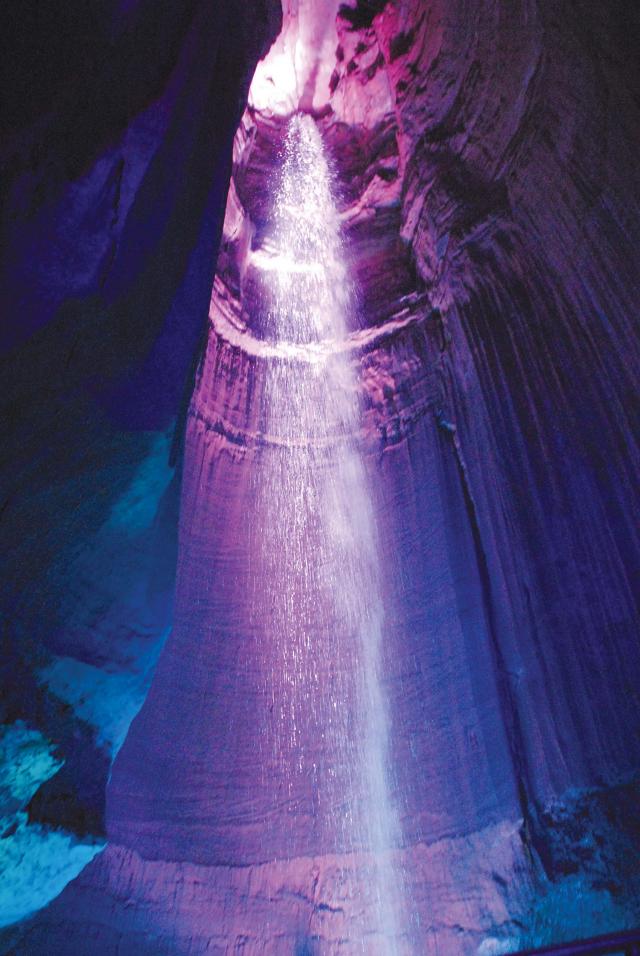
If you've ever travelled along Interstate 75 in Tennessee, then you've surely glimpsed the "See Ruby Falls" billboards along the road. Ruby Falls is a 145-foot-high (44 m) underground waterfall located in Lookout Mountain, near Chattanooga.
The Lookout Mountain Caverns is a limestone cave, formed when slightly acidic groundwater entered a subterranean stream and eroded the limestone, causing narrow cracks to widen into passages and caves. The stream that makes up Ruby Falls entered the cave sometime later.
Ruby Falls is in a large vertical shaft. The stream, 1,120 feet (341 m) underground, is fed both by rainwater and natural springs. It collects in a pool in the cave floor and then continues through the mountain until finally joining the Tennessee River.
Multnomah Falls, Oregon
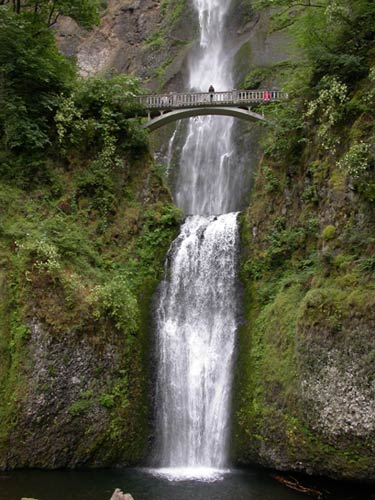
One of the most picturesque waterfalls in the United States, Multnomah Falls is on the Oregon side of the Columbia River Gorge. The falls drops in two major steps, and the total height of the waterfall is around 620 feet (189 m), making it the tallest waterfall in Oregon.
A unique feature at Multnomah is the Benson Footbridge, a 45-foot- long (14 m) footbridge where visitors can cross 105 feet (32 m) above the lower part of the falls. Visitors that aren't afraid of heights can follow the trail to a platform at the top of the falls for a breathtaking view of the Columbia Gorge, a small waterfall that is hidden from visitors on the ground.
Snoqualmie Falls, Washington
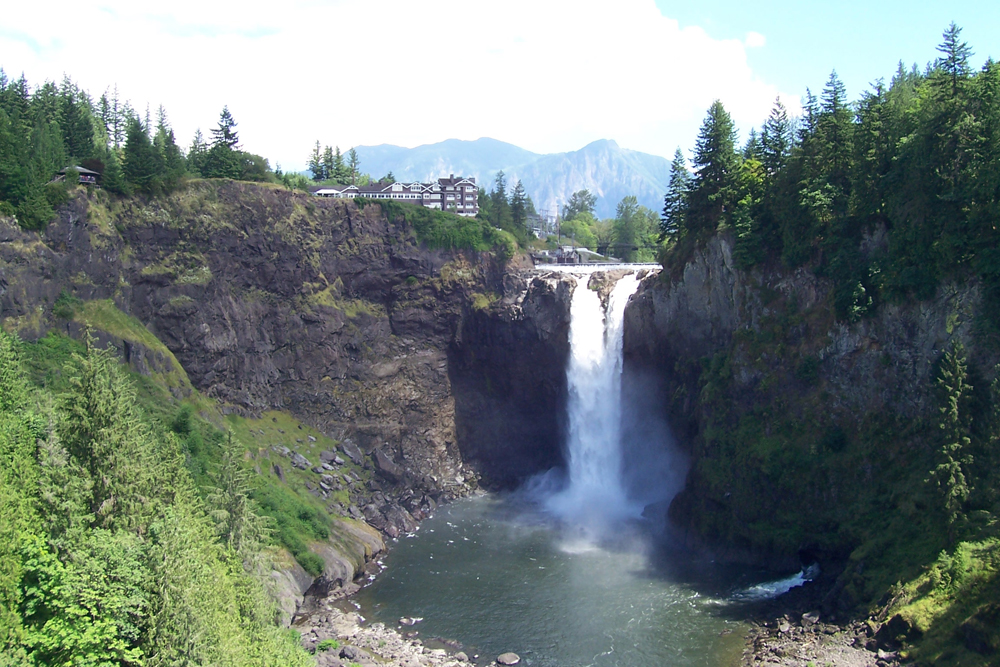
Does this waterfall look familiar? If so, you were probably a fan of the TV show Twin Peaks. Snoqualmie Falls regularly made an appearance in the cult show. The falls is 268 feet (82 m) tall and located on the river of the same name. Snoqualmie Falls is one of the most popular tourist attractions in Washington State. More than 1.5 million visitors see the falls every year.
Scientists recently found a surprise under Snoqualmie Falls. The water flows over a 20-million-year-old extinct volcano. Geologists had thought that the volcanic rock in the area was from Mount Persis, an extinct volcano to the north. But a closer look revealed the rock under Snoqualmie Falls is much younger than the rock of Mount Persis.
Niagara Falls, New York
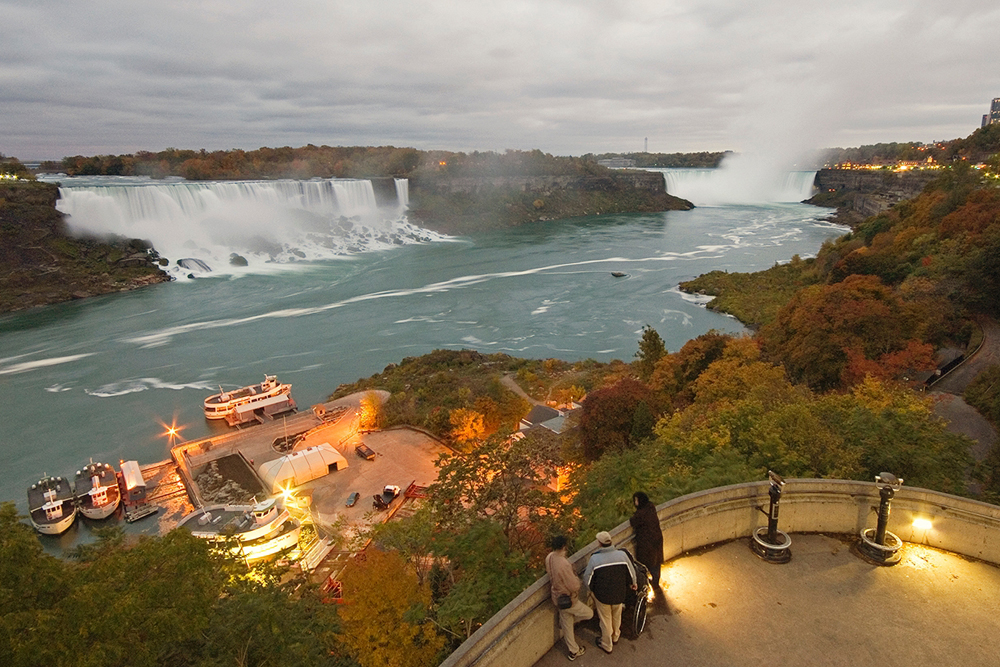
Niagara Falls is so famous that daredevils have been flocking to the falls since the 1800s. They've been jumping into, riding barrels down and walking tightropes across one of the most powerful waterfalls in the world.
Niagara Falls is actually the collective name for three waterfalls on the border between Ontario and New York. The falls form the southern end of the Niagara Gorge.
The three waterfalls are the Horseshoe Falls, the American Falls and the Bridal Veil Falls. The combined falls form the highest flow rate of any waterfall in the world, with a vertical drop of more than 165 feet (50 m).
Sign up for the Live Science daily newsletter now
Get the world’s most fascinating discoveries delivered straight to your inbox.
Shoshone Falls, Idaho
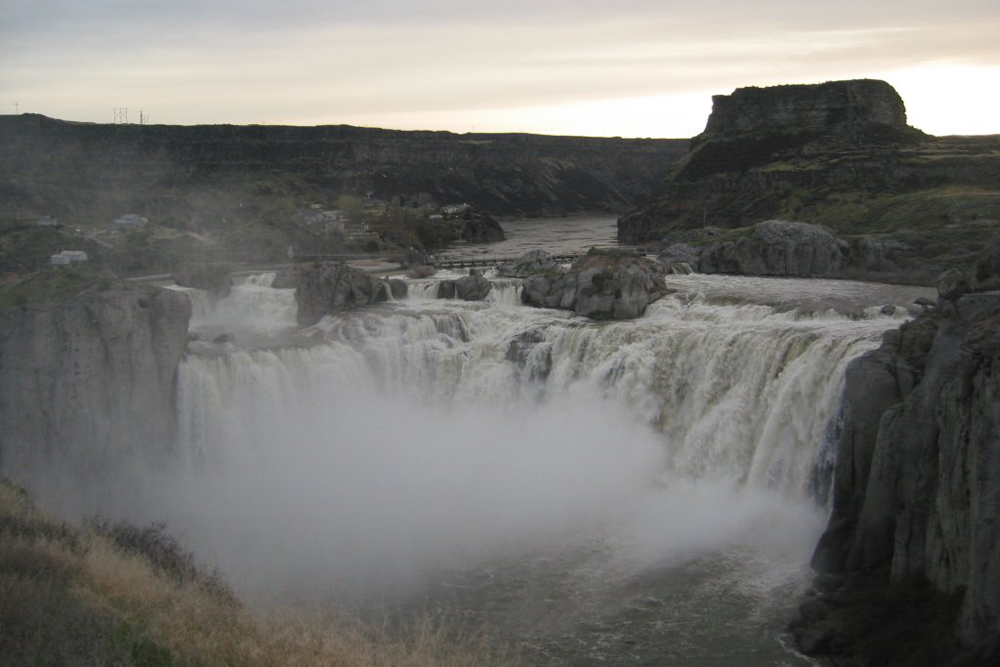
Known as the Niagara of the West, Shoshone Falls is 212 feet (64.7 m) high. That's actually 45 feet (14 m) higher than the more famous Niagara Falls. And this waterfall on the Snake River isn't just tall, it pours over a rim 1,000 feet (305 m) wide.
A park overlooks the waterfall for visitors to take in sweeping views. The Snake River is often diverted for irrigation, which can diminish the water levels in the summer and fall, so go in the spring for the best views.










